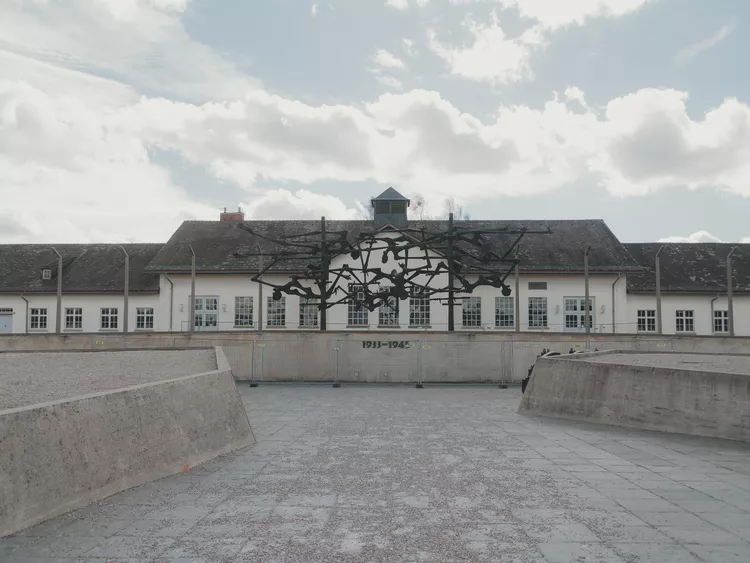The Nazi government inaugurated the first concentration camp at Dachau, Germany, in March 1933. This location has been restored and maintained as a Holocaust memorial in honor of the countless individuals who suffered and perished there from 1933 until its liberation in 1945. Numerous tours originate from nearby Munich, but visitors can also travel independently using public transportation.
The memorial provides extensive documentation in English, allowing visitors to grasp the harrowing events simply by exploring the site. However, joining a guided tour can provide additional insights that enhance the experience beyond self-guided exploration.
Dachau itself is a notable town with origins tracing back to the 9th century. In the 1870s, it gained recognition as the most renowned artists’ colony in Germany.
Dachau Gate: Arbeit Macht Frei
:max_bytes(150000):strip_icc():format(webp)/IMG_0991-1332a5f50ade47f0ad8d4830cf15c7c8.jpg)
Visitors enter the concentration camp through this gate, with over 600,000 individuals traveling from across the globe to visit the memorial each year.
The camp’s original inmates primarily included political prisoners, those opposing the Nazi regime. Later, other groups such as hardened criminals, homosexuals, gypsies, and Jehovah’s Witnesses were also confined at Dachau. Eventually, Jews were imprisoned as well.
The initial camp was established in a repurposed munitions factory from World War I. Completed in 1938, the facility was designed to accommodate 6,000 prisoners but frequently housed significantly more. It was secured by electrified fences and watchtowers, and the entrance gate bore the phrase “Arbeit Macht Frei” (“Work Makes You Free”).
The Crematorium: Barrack X
:max_bytes(150000):strip_icc():format(webp)/IMG_1190-dda7860a5a7c473cbd87ee8b25f95d58.jpg)
Initially, local residents were willing to supply food from their gardens to the camp, especially in the midst of economic hardship. However, as circumstances worsened and camps became overcrowded with malnourished prisoners, the local population’s willingness to assist dwindled.
Eventually, the Nazis sought a swift and efficient method to manage the increasing number of deceased prisoners. Cremation became the favored solution, although eventually the supply of fuel for the crematorium dwindled.
Resources
:max_bytes(150000):strip_icc():format(webp)/dachau-1-56a3a3aa3df78cf7727e631b.jpg)
The camp was liberated in 1945, a significant moment captured by George Stevens’ Irregulars in a haunting video recording of the liberation of the Dachau Concentration Camp.
For those interested in history, additional resources can be found on Dachau, including its development as an artists’ colony that began in the late 19th century.
Tours
:max_bytes(150000):strip_icc():format(webp)/GettyImages-148622285-5a05de399e942700378a24fd.jpg)
For a comprehensive experience, Radius Tours provides a three-hour tour of Dachau commencing at the train station. This tour includes all transportation fees and covers a wide array of topics, including the medical experiments conducted on prisoners and the camp’s role as a transit point for Jewish individuals destined for gas chambers.
Additionally, Munich Walk Tours offers a comparable three-hour tour of Dachau that can be paired with its Third Reich Tour for a discount.
Getting There
:max_bytes(150000):strip_icc():format(webp)/GettyImages-128240779-5a05debb845b34003be6edee.jpg)
- From the main train station, travel to the S-Bahn platforms and board any train on the S2 line heading to Dachau or Petershausen.
- Upon arriving at Dachau station, you can take Bus 726 or 724 to reach the Memorial. For route planning or to see options from other European locations, you can check transportation websites.
- The Dachau Concentration Camp Memorial Site is located at: Alte Römerstraße 75, 85221 Dachau.




